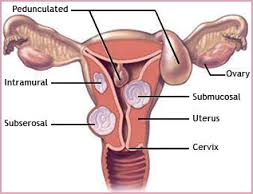Female Infertility: Causes, tests, signs, treatments
- Posted on
- Comment
 Female infertility can be also be caused by a number of factors, including the following:
Female infertility can be also be caused by a number of factors, including the following:
- Damage to fallopian tubes. Damage to the fallopian tubes (which carry the eggs from the ovaries to the uterus) can prevent contact between the egg and sperm. Pelvic infections, endometriosis, and pelvic surgeries may lead to scar formation and fallopian tube damage.
- Hormonal causes. Some women have problems with ovulation. Synchronized hormonal changes leading to the release of an egg from the ovary and the thickening of the endometrium (lining of the uterus) in preparation for the fertilized egg do not occur. These problems may be detected using basal body temperature charts, ovulation predictor kits, and blood tests to detect hormone levels.
- Cervical causes. A small group of women may have a cervical condition in which the sperm cannot pass through the cervical canal. Whether due to abnormal mucus production or a prior cervical surgical procedure, this problem may be treated with intrauterine inseminations.
- Uterine causes. Abnormal anatomy of the uterus; the presence of polyps and fibroids.
- Unexplained infertility. The cause of infertility in approximately 20% of couples will not be determined using the currently available methods of investigation.
How Is the Cause of Infertility Determined?
If male infertility is suspected, a semen analysis is performed. This test will evaluate the number and health of his sperm. A blood test can also be performed to check his level of testosterone and other male hormones.
If female infertility is suspected, your doctor may order several tests, including:
- A blood test to check hormone levels
- An endometrial biopsy to check the lining of the uterus
Two diagnostic tests that may be helpful in detecting scar tissue and tubal obstruction are hysterosalpingography and laparoscopy.
- Hysterosalpingography (HSG). This procedure involves either ultrasound or X-rays taken of the reproductive organs. Either dye or saline and air are injected into the cervix and travel up through the fallopian tubes. This enables the ultrasound or X-ray to reveal if the fallopian tubes are open or blocked.
- Laparoscopy. In this procedure, a laparoscope (a slender tube fitted with a fiberoptic camera) is inserted into the abdomen through a small incision near the belly button. The laparoscope enables the doctor to view the outside of the uterus, ovaries, and fallopian tubes to detect abnormal growths, as in endometriosis. The doctor can also check to see if the fallopian tubes are open at the same time.
-webmd






 (Selorm) |
(Selorm) |  (Nana Kwesi)
(Nana Kwesi)